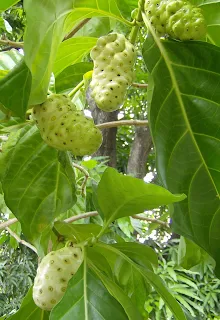By Liliana Usvat
Blog 365-365
You often hear saddening statistics about the rate of deforestation from ecologically-minded friends and the news, but how often do you hear about the good that is being carried out to reverse environmental damage?
On May 16, 2015, thousands of people gathered to volunteer and reforest the Earth. They planted 220 different species of flora on almost 5,000 acres of land, setting a new Guinness World Record.
President Rafael Correa said the seedlings were planted all over Ecuador, which boasts varied geography from its Pacific coast, high Andean peaks and low Amazon basin areas.

Environment Minister Lorena Tapia said on Twitter that 44,883 people planted the trees on more than 2,000 hectares (4,942 acres) of land.
Guinness Records adjudicator Carlos Martinez, said hundreds of varieties were planted as part of the mass reforestation effort.

"There is no record in history of similar events involving over 150 species,"
"I want to beat it once a month so the planet will be full of trees in very little time, which is what we need."
The Philippines holds the record for the most trees planted in an hour, with 3.2 million seedlings sown last September as part of a national forestation program.

Scientists believe planting trees helps offset carbon buildup in the atmosphere, as they absorb carbon dioxide and emit oxygen, helping to reduce global warming.
Ecuador holds several other world records, including the most plastic bottles recycled in one week.
Blog 365-365
You often hear saddening statistics about the rate of deforestation from ecologically-minded friends and the news, but how often do you hear about the good that is being carried out to reverse environmental damage?
On May 16, 2015, thousands of people gathered to volunteer and reforest the Earth. They planted 220 different species of flora on almost 5,000 acres of land, setting a new Guinness World Record.
President Rafael Correa said the seedlings were planted all over Ecuador, which boasts varied geography from its Pacific coast, high Andean peaks and low Amazon basin areas.

Environment Minister Lorena Tapia said on Twitter that 44,883 people planted the trees on more than 2,000 hectares (4,942 acres) of land.
Guinness Records adjudicator Carlos Martinez, said hundreds of varieties were planted as part of the mass reforestation effort.

National Reforestation Day, also named “Siembratón”, was an initiative from the Minister of Environment Lorena Tapia to “show Ecuador is committed to the protection of the environment” and invite citizens to become positive contributors in the process, Tapia said. This content was originally published by teleSUR at the following address: "http://www.telesurtv.net/english/news/Ecuador-Reforestation-Day-Breaks-Guinness-Record-20150516-0015.html". If you intend to use it, please cite the source and provide a link to the original article. www.teleSURtv.net/english
National Reforestation Day, also named “Siembratón”, was an initiative from the Minister of Environment Lorena Tapia to “show Ecuador is committed to the protection of the environment” and invite citizens to become positive contributors in the process, Tapia said. This content was originally published by teleSUR at the following address: "http://www.telesurtv.net/english/news/Ecuador-Reforestation-Day-Breaks-Guinness-Record-20150516-0015.html". If you intend to use it, please cite the source and provide a link to the original article. www.teleSURtv.net/english
National Reforestation Day, also named “Siembratón”, was an initiative from the Minister of Environment Lorena Tapia to “show Ecuador is committed to the protection of the environment” and invite citizens to become positive contributors in the process, Tapia said. This content was originally published by teleSUR at the following address: "http://www.telesurtv.net/english/news/Ecuador-Reforestation-Day-Breaks-Guinness-Record-20150516-0015.html". If you intend to use it, please cite the source and provide a link to the original article. www.teleSURtv.net/english
"There is no record in history of similar events involving over 150 species,"
"I want to beat it once a month so the planet will be full of trees in very little time, which is what we need."
The Philippines holds the record for the most trees planted in an hour, with 3.2 million seedlings sown last September as part of a national forestation program.

Scientists believe planting trees helps offset carbon buildup in the atmosphere, as they absorb carbon dioxide and emit oxygen, helping to reduce global warming.
Ecuador holds several other world records, including the most plastic bottles recycled in one week.



















